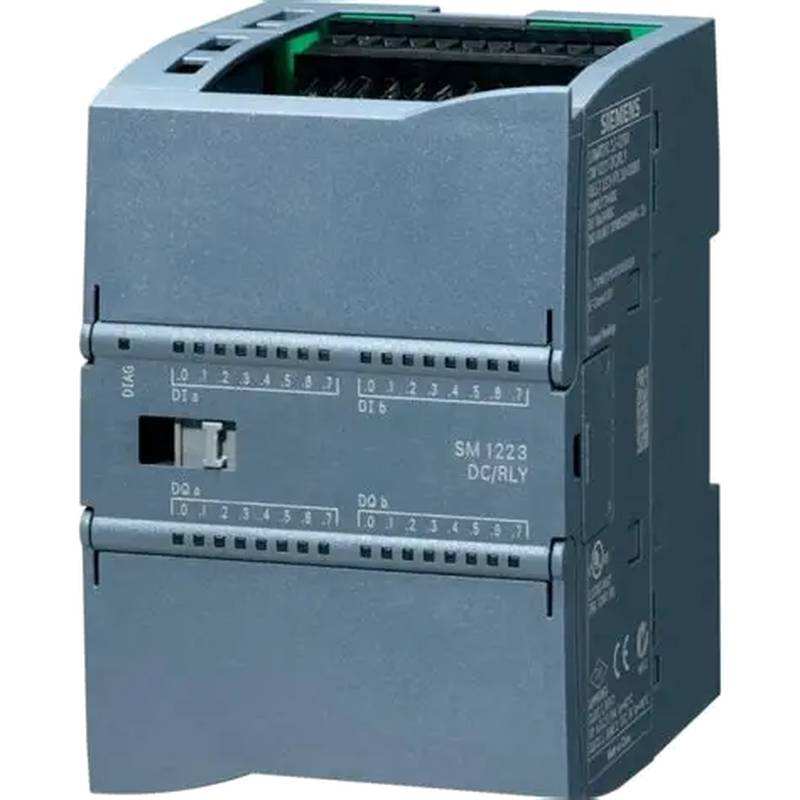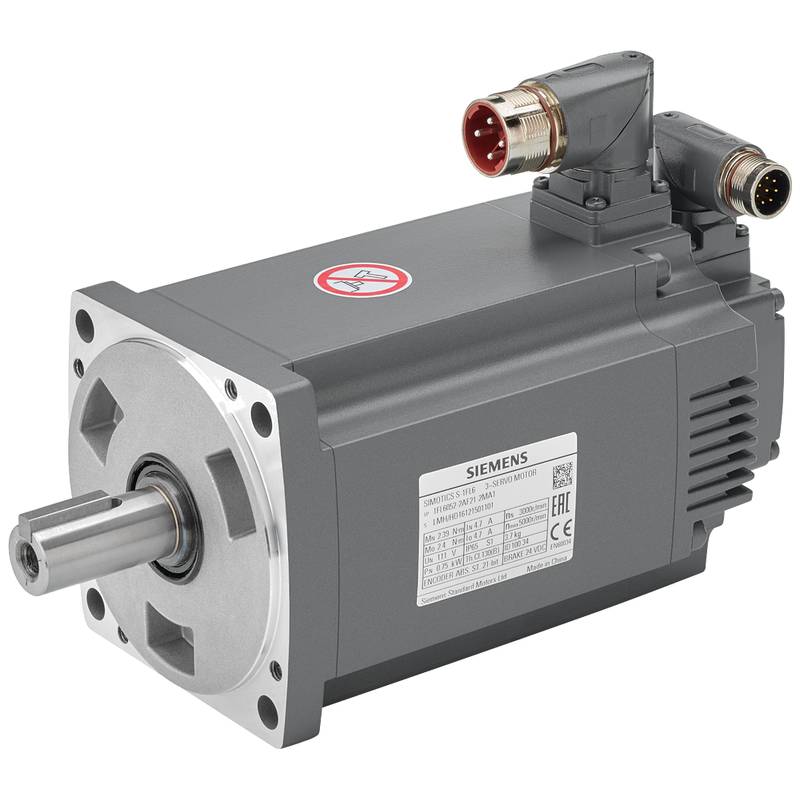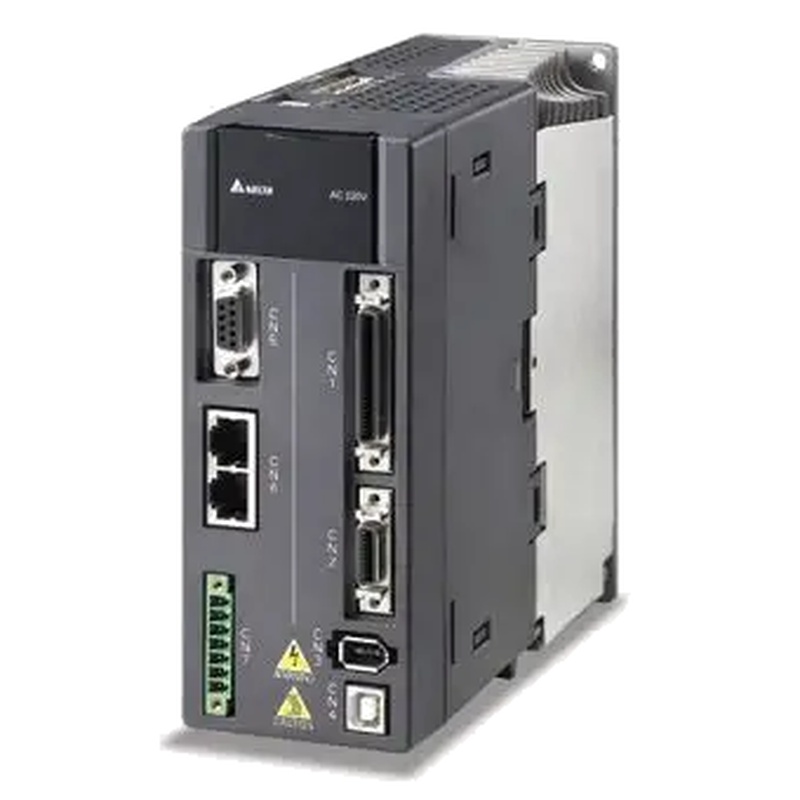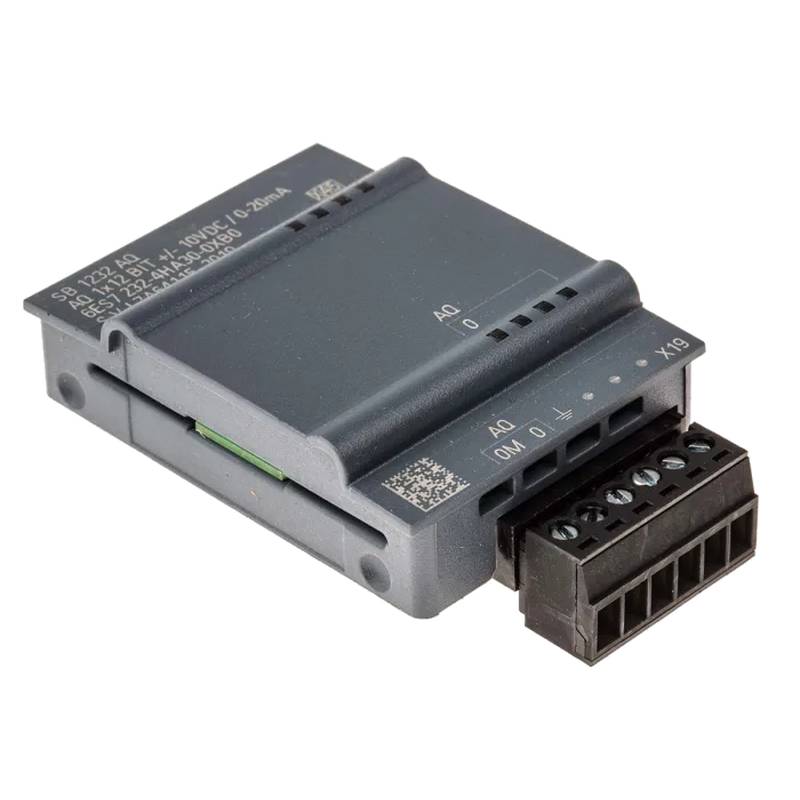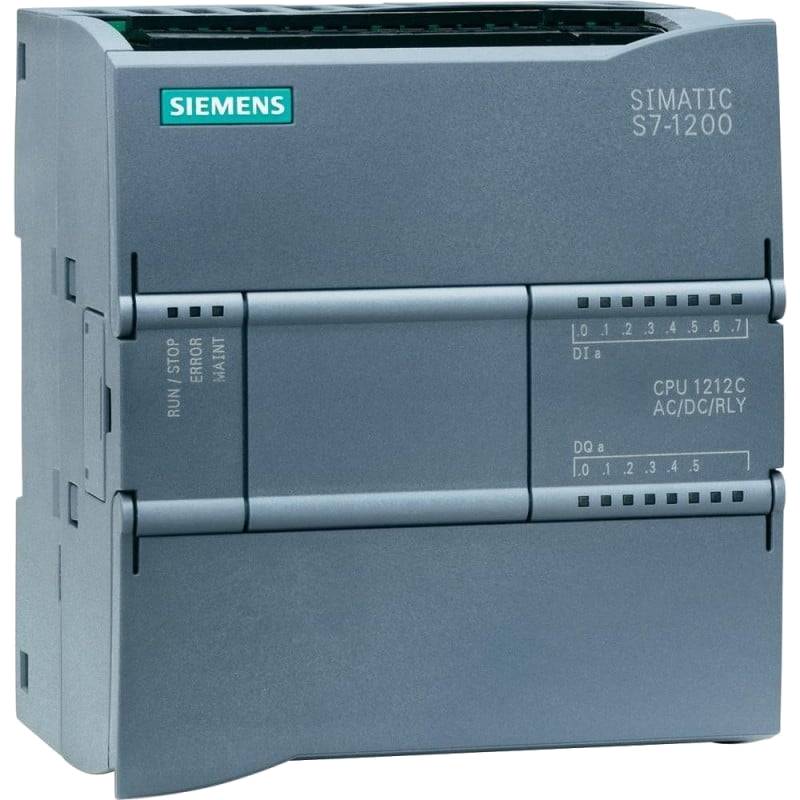
The Siemens 6ES7223-1PL32-0XB0 is a robust 32-point digital input/output signal module designed for seamless integration with the SIMATIC S7-1200 PLC series. This module offers 16 digital inputs (15-24Vdc Sink) and 16 digital outputs capable of handling 5-250Vac or 5-30Vdc loads up to 2A resistive. Its key advantages lie in its versatility for discrete control applications, compact design for space-saving installations, and reliable Siemens performance. The operating temperature range of -20°C to +60°C ensures dependable operation in various industrial environments. With a front connector and IP20 protection rating, it provides straightforward system expansion and protection against solid objects larger than 12.5mm.
Product Specifications
| Feature | Specification |
| :------------------------ | :--------------------------------------------------------------- |
| Product Number | 6ES7223-1PL32-0XB0 |
| Module Type | Digital Input/Output Signal Module (SM 1223) |
| PLC Series Compatibility | SIMATIC S7-1200 |
| Digital Inputs | 16 x (15-24Vdc Sink) |
| Digital Outputs | 16 x Relay Outputs (5-250Vac / 5-30Vdc, 2A resistive load) |
| Supply Voltage | 24Vdc |
| Input Delay | Parameterizable: 0.2ms to 12.8ms |
| Output Delay (resistive) | Max. 10ms ("0" to "1" and "1" to "0") |
| Ambient Operating Temp. | -20°C to +60°C |
| Protection Rating | IP20 |
| Mounting | Backplane / Rack Mounting |
| Dimensions (Net) | Width: 45 mm, Height: 100 mm, Depth: 75 mm |
| Weight (Net) | Approx. 0.319 Kg |
| Connection Type | Front Connector |
Core Features & Market Positioning
The Siemens 6ES7223-1PL32-0XB0 stands out in the industrial automation market due to its robust integration within the SIMATIC S7-1200 ecosystem. This module is designed for applications requiring a balanced mix of discrete inputs and outputs, particularly where controlling higher voltage AC loads or DC loads is necessary via relay contacts. Its positioning as a reliable expansion module for the S7-1200 series makes it a cost-effective choice for machine builders and system integrators looking to enhance PLC capabilities without overhauling their core automation platform. The inclusion of relay outputs offers inherent electrical isolation, a crucial advantage in scenarios with significant voltage potential differences or noisy electrical environments. Furthermore, the parameterizable input delay allows for fine-tuning responses to sensor signals, enhancing control precision and preventing false triggers.
Key Application Scenarios
This Siemens module is ideally suited for a wide array of industrial automation tasks. Its 16 digital inputs can monitor status from switches, proximity sensors, and pushbuttons, providing critical data to the S7-1200 CPU. Simultaneously, the 16 relay outputs are capable of actuating devices such as motor contactors, solenoid valves, indicator lights, and small heaters. Common applications include:
Machine Control: Automating discrete functions on packaging machines, assembly lines, and material handling equipment. Building Automation: Controlling HVAC systems, lighting, and access control. Process Skids: Managing sequential operations and interlocks in smaller process units. Standalone Systems: Providing I/O for dedicated control tasks where a full PLC system is required but space or cost is a constraint. High-Speed Counting: While primarily an I/O module, its integration into S7-1200 systems allows it to support applications that may also involve high-speed counting via dedicated counter inputs on the CPU or other specialized modules.
Practical System Integration Guidance
Integrating the 6ES7223-1PL32-0XB0 into a SIMATIC S7-1200 system is streamlined through the TIA Portal engineering software. Installation involves physically connecting the module to the S7-1200 CPU or another expansion module via the backplane. Wiring the digital inputs typically involves connecting 24Vdc signals from sensors and switches to the input terminals, ensuring correct polarity for sink-type inputs. For the relay outputs, wiring depends on the load being controlled. Each output channel can switch up to 2A resistive. It is crucial to ensure that the connected loads do not exceed the 2A rating, and for inductive loads, appropriate suppression (e.g., flyback diodes) should be considered, although the inherent isolation of relay contacts provides a good level of protection.
When programming in TIA Portal, the module is recognized by its article number, and its I/O points are mapped directly into the PLC's address space. Users can then use standard digital input and output instructions (e.g., I_Input, Q_Output) in LAD, FBD, or SCL to control and monitor the connected devices. Parameterization of input delays can be configured within the module's properties in TIA Portal, allowing for customized response times.
Operation and Risk Mitigation
Operating the Siemens 6ES7223-1PL32-0XB0 requires adherence to standard industrial electrical safety practices. Ensure all power is de-energized before performing any wiring or maintenance. The module's IP20 rating means it must be installed within an enclosure to protect against environmental factors and accidental contact.
Common troubleshooting issues often relate to wiring errors, incorrect voltage supply, or exceeding output current limits. Always verify connections against the wiring diagrams and ensure the 24Vdc supply is stable and within tolerance. If outputs fail to energize or indicate incorrect states, check the load, wiring, and programming logic. The module features LEDs for status indication of both inputs and outputs, which are invaluable for quick diagnostics. In the event of an output failure, especially if it’s a relay, inspect for signs of mechanical damage or electrical overload. While this module does not feature built-in short-circuit protection on the outputs, it is advisable to implement external fusing or circuit breakers as per the system's safety requirements.
Scalability & Long-Term Value
The Siemens 6ES7223-1PL32-0XB0 contributes to the long-term value of an automation system through its seamless integration with the scalable SIMATIC S7-1200 platform. The S7-1200 allows for flexible expansion using a wide variety of signal modules (SMs) and signal boards (SBs), enabling users to precisely match I/O requirements without over-provisioning. This modular approach means that as automation needs grow, additional I/O can be added by simply incorporating more modules onto the S7-1200 backplane, up to the maximum supported by the CPU. Compatibility with TIA Portal ensures that future software updates and potential upgrades to newer S7-1200 CPUs will maintain a high degree of backward compatibility, simplifying migration paths. Furthermore, Siemens' commitment to IIoT and Industry 4.0 means that systems built with S7-1200 components are well-positioned for integration with higher-level network and data management systems.
Frequently Asked Questions
Q1: What are the primary advantages of using the Siemens 6ES7223-1PL32-0XB0?
The module offers a high density of 32 I/O points in a compact form factor. It provides versatile relay outputs capable of switching AC and DC loads, offering electrical isolation. Its integration with the SIMATIC S7-1200 platform ensures seamless engineering and expandability within a proven automation system.
Q2: Can the relay outputs switch inductive loads, and what are the limitations?
Yes, the relay outputs can switch inductive loads, but with a maximum rating of 2A. For inductive loads, it is crucial to implement appropriate arc suppression (e.g., flyback diodes) to protect the relay contacts from voltage spikes generated by the collapsing magnetic field when the load is de-energized.
Q3: How do I wire the digital inputs for sink or source configurations?
This module features 16 digital inputs that are designed for 15-24Vdc Sink configuration. For sink inputs, the positive terminal of the voltage source connects to the sensor, and the sensor's output connects to the input terminal of the module, with the negative side of the voltage source connected to the module's common (M) terminal.
Q4: What is the maximum switching frequency for the digital outputs?
The maximum switching frequency for the relay outputs depends on the load. For a resistive load, they can switch up to 2A. The mechanical endurance of the relays is rated for 10 million cycles, and at rated load voltage, it's 100,000 cycles. Continuous operation at maximum current may affect lifespan.
Q5: How does the parameterizable input delay function work?
The input delay allows you to set a time filter for the digital inputs, ranging from 0.2ms to 12.8ms. This feature is useful for ignoring short electrical noise pulses or debouncing mechanical switches, ensuring that only stable signals are registered by the PLC.
Q6: Is this module suitable for safety-related applications?
No, the 6ES7223-1PL32-0XB0 is not designed for safety-related functions and is not a fail-safe module. For applications requiring safety, Siemens offers specific fail-safe I/O modules within the SIMATIC S7-1200 family.
Q7: What is the typical power consumption of the 6ES7223-1PL32-0XB0?
The module has a typical power dissipation of 10W. The current consumption from the backplane bus (5V DC) is a maximum of 180 mA, and the consumption for the 24V DC relay coils is approximately 11mA per output when energized.
Q8: Can I expand the S7-1200 system beyond the 16 inputs and 16 outputs of this module?
Absolutely. The S7-1200 platform is highly modular. You can add more digital and analog signal modules (SMs) or signal boards (SBs) to the CPU or other expansion modules, up to the maximum I/O capacity supported by the specific S7-1200 CPU being used.
Q9: What are the operating temperature limits for this module?
The Siemens 6ES7223-1PL32-0XB0 is rated for operation in ambient temperatures ranging from -20°C to +60°C, making it suitable for a wide range of industrial environments.
Q10: Where can I find detailed technical documentation and support for this module?
Detailed technical specifications, datasheets, manuals, and FAQs for the 6ES7223-1PL32-0XB0 are available on the Siemens Industry Online Support portal (Siemens SiePortal) and through authorized Siemens distributors like RS Components or Heitek Automation.














